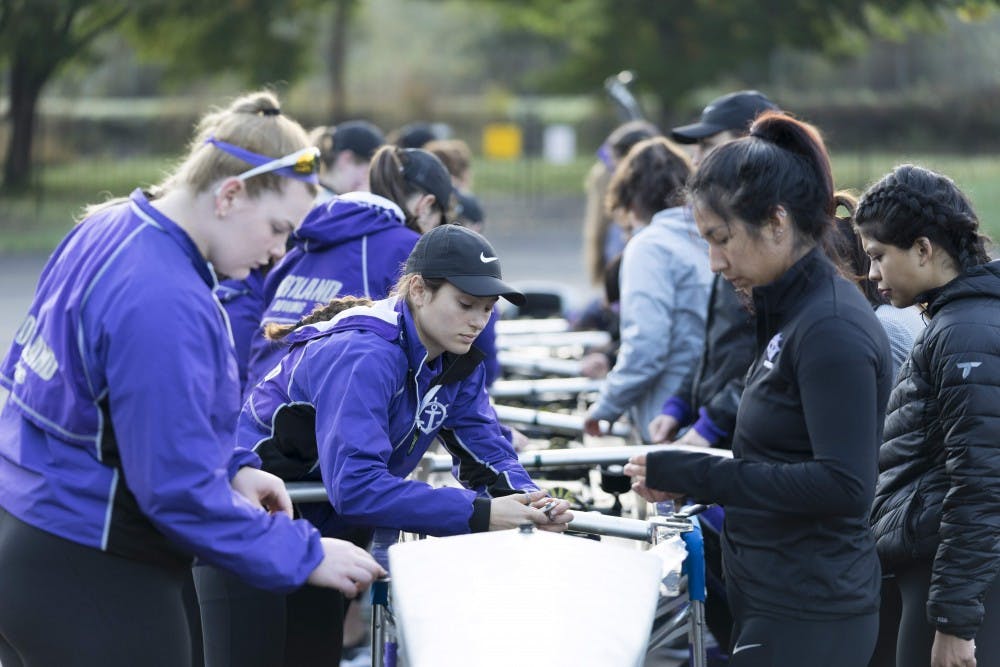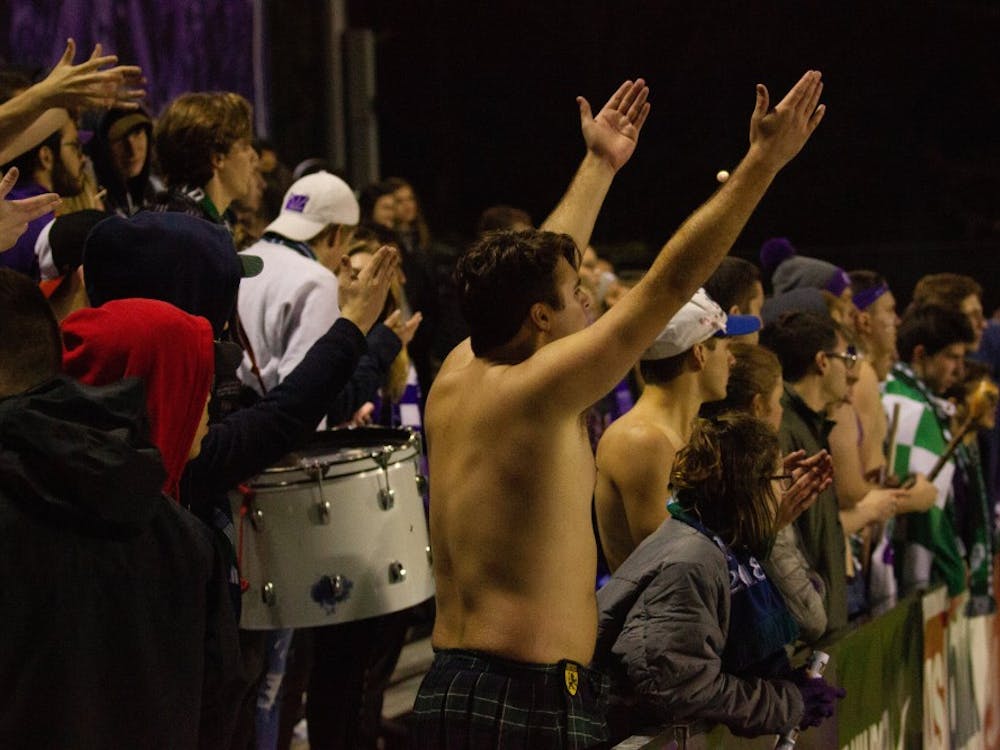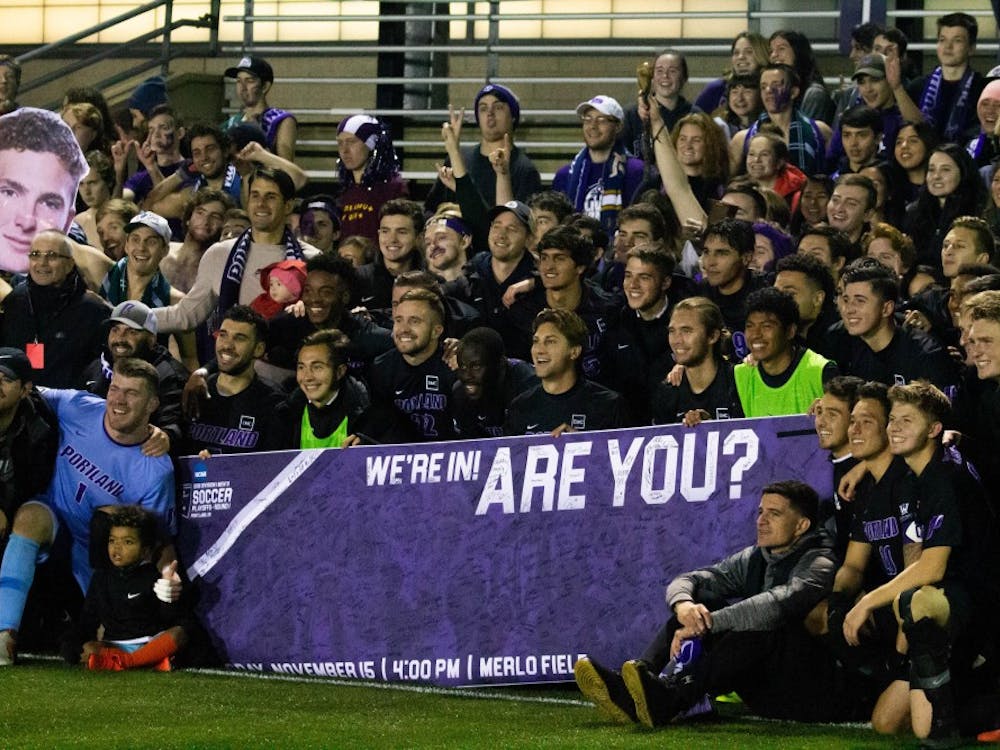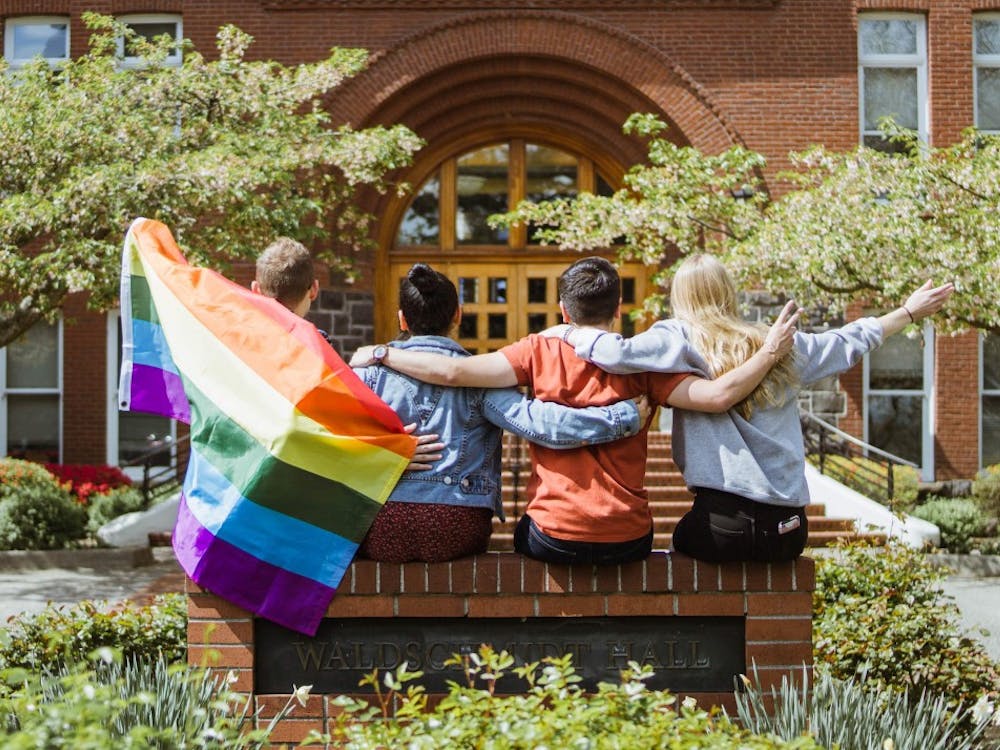It’s 7:30 a.m. at Oaks Amusement Park. It’s the day after Candyland, the University of Portland’s fall dance. While other students are spending the morning snuggled up in bed after dressing up in their sweetest outfits and dancing the night away, the rowing team had their own delicious treat of waking up at 6:15 a.m. to go to the currently empty park for a scrimmage.
“I mean, it’s still an hour later than when we normally wake up,” senior rower Jacquelyn Bass points out with a laugh. “Pretty nice that we get to sleep in.”
It’s no secret that UP rowers wake up early to get out to Vancouver Lake for practice. Most of the team is up by 5:15 a.m. so they can leave for the boathouse by 5:50 a.m. And while the spring season is their most competitive time, the fall season provides the team with an opportunity to work their way back into shape.

There are several differences between the fall and spring season. The fall season focuses on longer distances, with each race about 5,000 meters, while the spring season races are 2,000 meters. Head coach Pasha Spencer said it’s akin to having cross country in the fall and track in the spring.
The training for these seasons is also different. Fall focuses on endurance while spring focuses on power. Fall races can last anywhere between 15 to 20 minutes, while spring races only go for about six and a half minutes. They’re looking at mileage for the fall season, anywhere between 60,000 to 120,000 meters a week.
The training is also more technical, with people coming back from summer break and others learning how to row for the first time. They do plenty of weight training in the fall while also working on rowing machines, going as hard as they can for 20 minutes at a time. All of this is done with the goal of getting in shape for the spring.
“It’s a really good way to ease back in after summer,” freshman rower Olivia Zilavy-Pailthorp said. “We get to just build up conditioning for spring.”
Spencer said that this year’s squad “had a huge walk-on class,” with many people signing up through a class teaching the basics of rowing that just started this year called HPE 107: Introduction to Rowing.

“We’ve been trying to do it for three years but this year we actually had 18 people sign up,” Spencer said.
Spencer said the goal of the class is to teach people the basics of rowing, helping them understand the sport better (she originally joked that the goal is just attendance). Spencer said they not only want more people to understand the sport but also for people to come out and try it.
“I think it’s a huge opportunity for women to be able to have this opportunity to be a division one varsity collegiate athlete because they would not get this experience in any other sports,” Spencer said. “Rowing’s the one thing where you could walk on and learn a totally new sport and be able to compete at the highest level possible in university level.”
Getting up at 5:15 a.m. can be a slog, so Spencer tries to keep practice interesting. One of the ways she does so is through Battleship, a game where the names of all the rowers are thrown into a hat and then the coxswains make a boat lineup from that.
“Battleship’s part of making training fun,” Spencer said. “So, we are out there at 39 degrees in the morning and trying to get our bodies to do these long-distance pieces … So, we’re totally racing mixed lineups, but we get to practice and execute our race plan.”
Drills like Battleship are needed in a fall that’s so heavily focused on training and lower stakes races. Expectations are different in the fall than in the spring. In the spring, the rowing team’s goal for the past few years has been to break into the top three of the West Coast Conference. But the fall season doesn’t count towards ranking and they won’t see all the WCC schools they usually face.
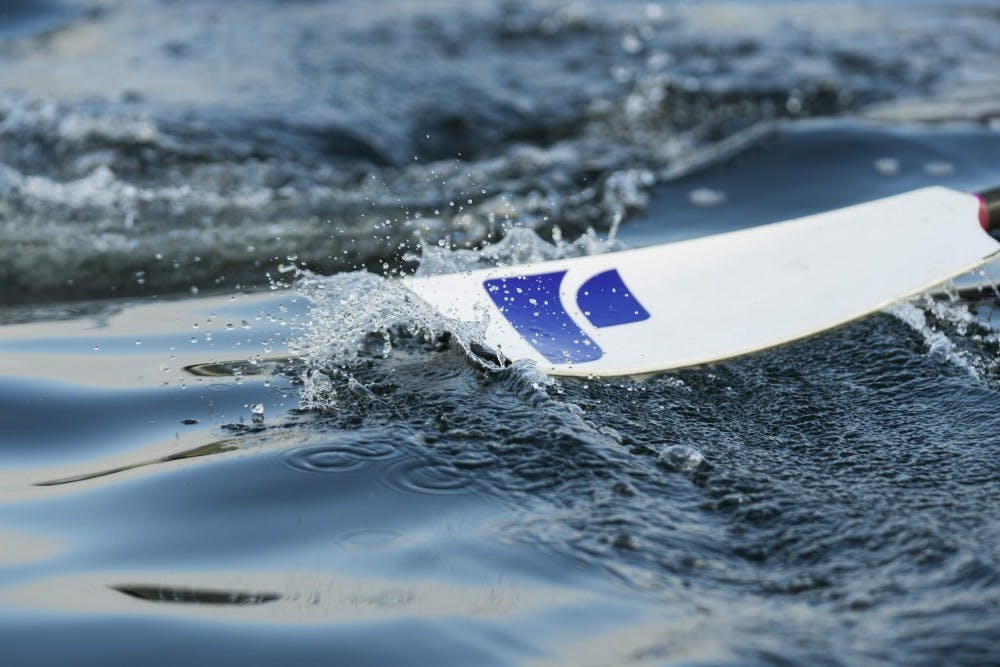
Even though races don’t count towards their ranking, the Pilots are still looking to stay competitive. They’ll compare themselves to other WCC schools and their times throughout the fall and also keep an eye on how fast they’re going and comparing themselves to last year.
“It’s a good comparison to make sure that we’re still staying competitive with them while they train even though we don’t get to see them,” junior coxswain Emma Papenhausen said. “It’s a little bit harder because we’re just kind of beating ourselves every year, but we make it work.”
Portland has three races this fall, their only home race being the Portland Fall Classic on Oct. 27 at Vancouver Lake. The other two races include the Puget Sound Autumn Invite at American Lake in Lakewood, Washington, on Oct. 26 and the Head of the Lake at Lake Union in Seattle on Nov. 3.
Though they won’t get the opportunity to race against conference opponents, they do get the chance to go up against bigger schools such as the University of Washington, who won their fifth championship for rowing last spring. Spencer rowed for the Huskies in college and was an assistant coach for one year in 1995.

One of the unique parts of rowing is that it’s a team sport really without standouts. No one rower shines among the rest. It’s not a team sport like football or basketball where one person can stand out as the star. The team has to work in unison or the boat doesn’t function.
“You don’t get rewarded for standing out,” Spencer said. “The whole boat has to look the same.”
Spencer noted there has been a culture shift from being just a team to more of a family, a group of 50 women working towards a common goal and sharing similar values. As long as rowers are ready to buy into that culture, then the team can thrive.
“The culture now is like ‘This is our family,’” Spencer said. “And we don’t have guidelines, just like ‘These are our values. If you value the same thing, then come with us.”
And be prepared to wake up early.
Kyle Garcia is the Sports editor for The Beacon. He can be reached at garciaky20@up.edu.



